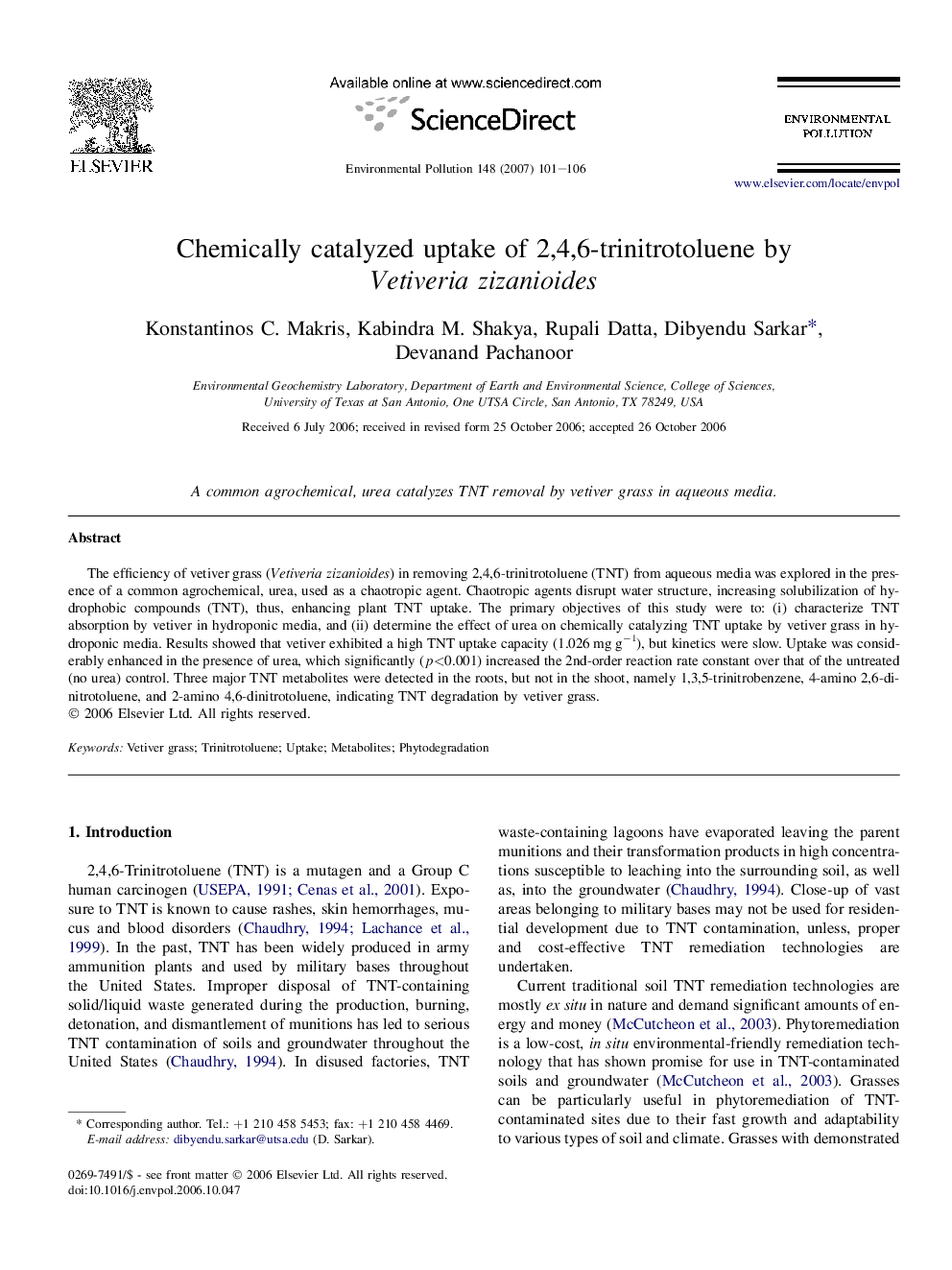| Article ID | Journal | Published Year | Pages | File Type |
|---|---|---|---|---|
| 4427565 | Environmental Pollution | 2007 | 6 Pages |
The efficiency of vetiver grass (Vetiveria zizanioides) in removing 2,4,6-trinitrotoluene (TNT) from aqueous media was explored in the presence of a common agrochemical, urea, used as a chaotropic agent. Chaotropic agents disrupt water structure, increasing solubilization of hydrophobic compounds (TNT), thus, enhancing plant TNT uptake. The primary objectives of this study were to: (i) characterize TNT absorption by vetiver in hydroponic media, and (ii) determine the effect of urea on chemically catalyzing TNT uptake by vetiver grass in hydroponic media. Results showed that vetiver exhibited a high TNT uptake capacity (1.026 mg g−1), but kinetics were slow. Uptake was considerably enhanced in the presence of urea, which significantly (p<0.001) increased the 2nd-order reaction rate constant over that of the untreated (no urea) control. Three major TNT metabolites were detected in the roots, but not in the shoot, namely 1,3,5-trinitrobenzene, 4-amino 2,6-dinitrotoluene, and 2-amino 4,6-dinitrotoluene, indicating TNT degradation by vetiver grass.
